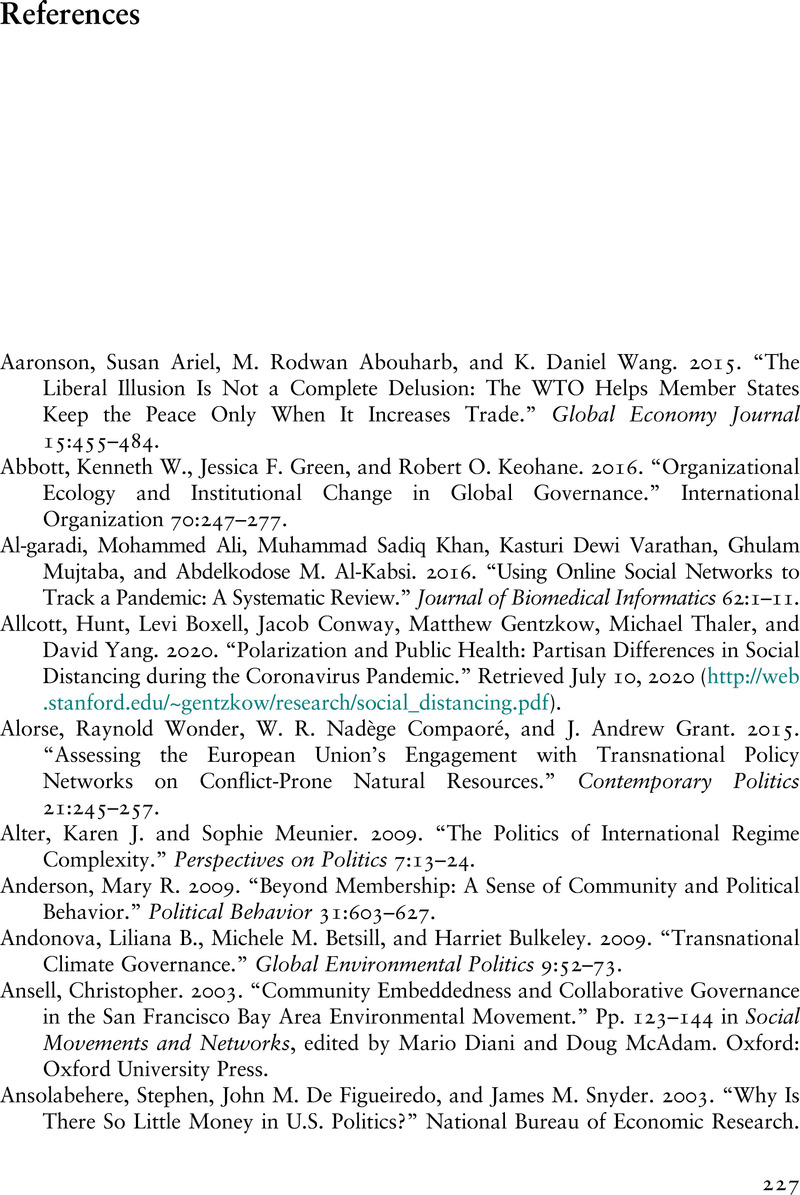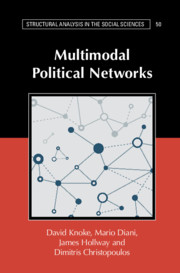Book contents
- Frontmatter
- Contents
- Figures
- Tables
- Preface
- 1 Politics, Communities, and Power
- 2 Multimodal Graphs and Matrices
- 3 Agency, Influence, Power
- 4 Political Communities in a Policy Network
- 5 Individuals in Associations
- 6 Agents and Events in Collective Action Fields
- 7 Nations Trading and Fighting
- 8 Legislative Influence
- 9 The Potential of Multimodal Political Networks
- Appendices
- References
- Index
- References
References
Published online by Cambridge University Press: 12 May 2021
- Frontmatter
- Contents
- Figures
- Tables
- Preface
- 1 Politics, Communities, and Power
- 2 Multimodal Graphs and Matrices
- 3 Agency, Influence, Power
- 4 Political Communities in a Policy Network
- 5 Individuals in Associations
- 6 Agents and Events in Collective Action Fields
- 7 Nations Trading and Fighting
- 8 Legislative Influence
- 9 The Potential of Multimodal Political Networks
- Appendices
- References
- Index
- References
Summary

- Type
- Chapter
- Information
- Multimodal Political Networks , pp. 227 - 260Publisher: Cambridge University PressPrint publication year: 2021

